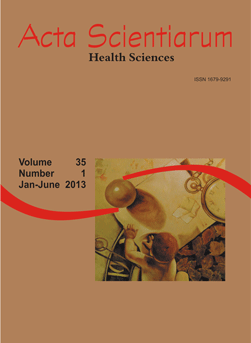<b>Characterization of <i>Candida</i> spp. isolated from vaginal fluid: identification, antifungal susceptibility, and virulence profile</b> - doi: 10.4025/actascihealthsci.v35i1.13557
Abstract
A total of 101 (20.0%) yeast samples were isolated from vaginal fluids of 504 non-hospitalized patients in Maringá, Paraná State, Brazil and Candida albicans was more frequent specie (93.1%) identified by seminested PCR method. All the isolates were susceptible to amphotericin B and nystatin, and 93.1% of them were susceptible to fluconazole. The acid proteinase, hemolytic and phospholipase activities were observed in 99.0, 90.0, and 88.0% of Candida spp., respectively. Around 67.0% of the strains had adherence indexes of 0.5 to 1.5 yeasts by Vero cell, and most of them showed a hydrophilic profile. Correlation studies indicated hydrophilic yeasts presented higher adherence index, proteinase, and phospholipase activities; and a positive correlation between all enzymes was also observed. In addition, the isolates with high hemolytic activity were less susceptible to fluconazole and amphotericin B. These results of Candida prevalence and antifungal susceptibility corroborate with literature’s datas and correlation between virulence factors and MIC values suggest Candida isolates from vaginal fluid less susceptible to antifungal and with higher extracellular enzymes production can be more virulent to cause tissue damage.
Downloads
DECLARATION OF ORIGINALITY AND COPYRIGHTS
I Declare that current article is original and has not been submitted for publication, in part or in whole, to any other national or international journal.
The copyrights belong exclusively to the authors. Published content is licensed under Creative Commons Attribution 4.0 (CC BY 4.0) guidelines, which allows sharing (copy and distribution of the material in any medium or format) and adaptation (remix, transform, and build upon the material) for any purpose, even commercially, under the terms of attribution.
Read this link for further information on how to use CC BY 4.0 properly.























5.png)







